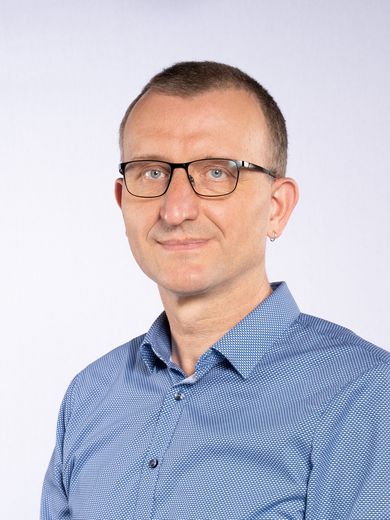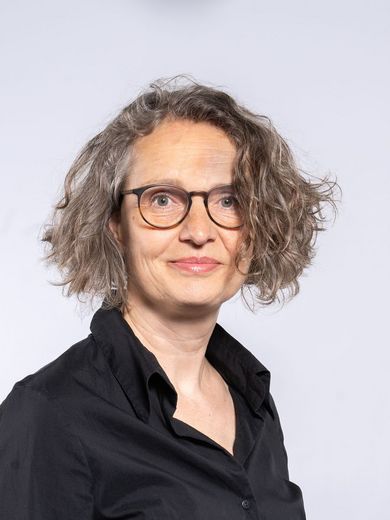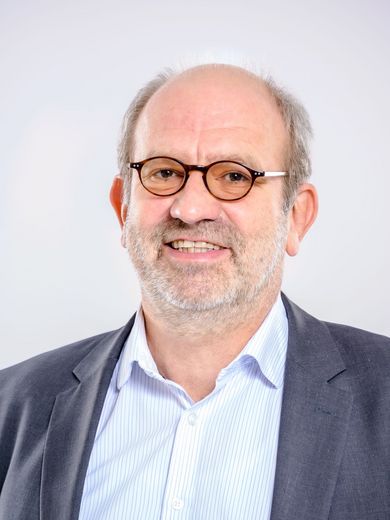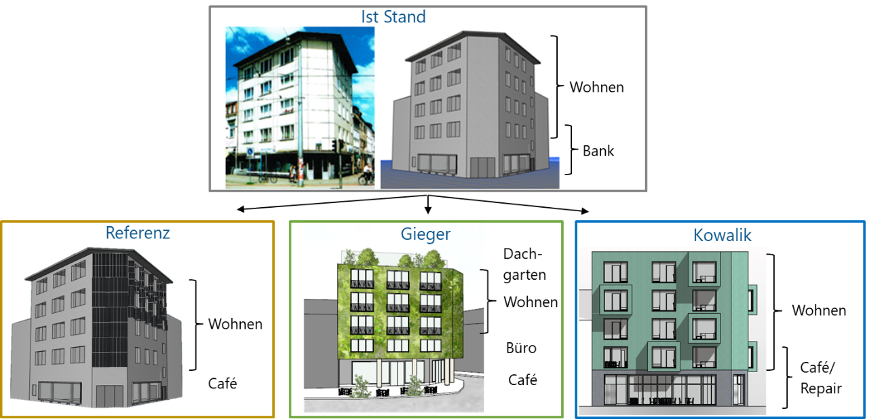![[Translate to English:] Ressourcenbewusste Umbaukonzepte für ein Gebäude in Bremen Gröpelingen [Translate to English:] Ressourcenbewusste Umbaukonzepte für ein Gebäude in Bremen Gröpelingen](/assets/hsb/de/_processed_/b/2/csm_banner_08f97115ab.jpg)
Master's students from the Architecture and Sustainable Environment and Energy Systems (ZEUS) degree programmes have worked together to develop sustainable transformation concepts for an apartment building in Gröplingen.
Climate protection and climate adaptation are the two major levers for meeting the challenges of climate change. In new buildings, these aspects can already be considered in the planning phase, but what about existing buildings? How much "grey energy" is in an existing building? And can renewable energies also be used as urban design elements? How extensively must sustainability be thought of in the built environment? An interdisciplinary cooperation between the Master's course "Project Material & Ecology" led by Prof. Michaela Hoppe and Prof. Ingo Lütkemeyer and a project group from the ZEUS Master's programme led by Prof. Dr. Jürgen Knies explored these and other questions in the winter semester 21/22.
Using the example of the residential and commercial building at Gröpelinger Heerstraße No. 199, architectural, urban planning but also socio-economic initial conditions were examined. Initially, all stakeholders were challenged to develop a common understanding of the challenges. During workshops and site visits, the different perspectives became clear and it was gradually worked out where synergies existed.
In addition, the students entered into an intensive exchange with the homeowner and were able to pick up on the urban planning framework conditions and ongoing programmes first-hand from employees of the Senator for Climate Protection, Environment, Mobility, Urban Development and Housing (SKUMS).
As a result, the designs by Olivia Gieger and Filip Kowalik were analysed in more detail and an energy concept was developed for each. With the help of a reference concept, the theoretical overall potential could be determined. Furthermore, the question of how sustainability can be measured in its entire range and used as a basis for decision-making was explored.
"The exchange with the ZEUS students led me to adapt my design with regard to the building technology, which resulted in a perfect interplay of architectural language and building technology. The collaboration showed that the exchange of different disciplines is the basis for optimally adapting existing buildings for the future and the climate requirements that come along with it." Olivia Gieger, Architecture / Environmental Design
"The collaboration of two parties on the sustainable design of a real building illustrated the necessity of interdisciplinary knowledge and possibilities for the success of such a large-scale project. Despite, or perhaps because of, some difficulties, all participants were certainly able to gain important experience for their professional lives in the near future." Marius Kalmbacher, ZEUS
"The cooperation with the architecture students was very enriching and could give us as future engineers an idea of real projects including the hurdles and problems. I hope that the building will be renovated in the near future, because the visions of the concepts are promising." Pia Niebel, ZEUS
ZEUS students:
Marius Kalmbacher, René Kohlwey, Mirco Kohlwey, Pia Niebel, Fabian Koséck
Architecture students:
Ruven Benedict Berg, Arian Dilmaghani-Oromieh, Olivia Gieger, Clara Helene Hartig, Jamile Issa, Filip Kowalik, André Mey, Marvin-Tim Pientka, René Remmert, Frederieke Schons

Prof. Dr. Jürgen Knies
Infrastructure planning of environmental and energy facilities
+49 421 5905 2362
+49 176 1514 0141
Email

Prof. Dipl.-Ing. Michaela Hoppe
Professorship for Climate-Friendly Architecture
+49 421 5905 2233
+49 176 1514 0235
Email

Prof. Dipl.-Ing. Ingo Lütkemeyer
Entwerfen, Baukonstruktion und Gebäudetechnik
+49 421 5905 2254
Email
Fig.: Ideas workshop of the master's students from architecture and ZEUS (Photo: Jürgen Knies)
Vergleich der Konzepte
